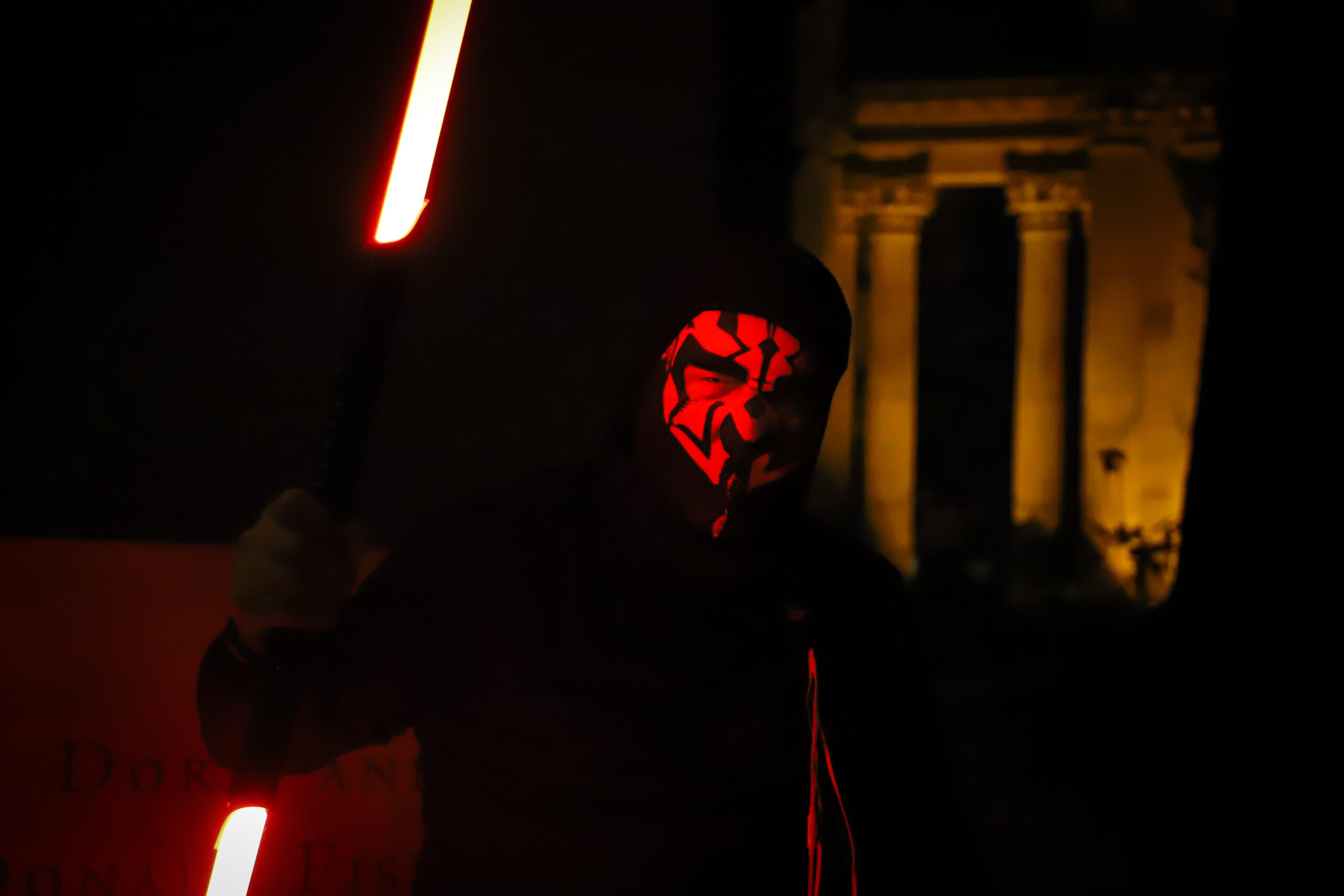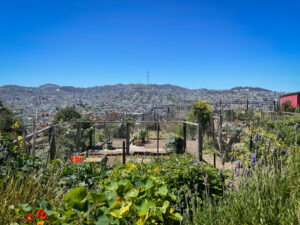With stunning gardens, fountains and swans that glide across the glittering water, the Palace of Fine Arts is one of the most breathtaking locales in the city. You feel as if you’ve been whisked away in a time machine spinning through space and time back to 1915 as you gaze up at the statues adorning the sides of the dome in the center.
Unlike many visitors, though, my favorite time to visit has been at night, when the skaters arrive. Your time machine leaps forward to 1969 with the distant sound of disco music and the roar of rollerblades on concrete.
My first time visiting, I was struck by how the columns light up after dark. As you step inside the rotunda and look up, everything is cast in a warm yellow-orange glow. Couples walk through the paths holding hands and friends lean against the columns inside of the dome, creating a comforting fuzzy feeling. As I arrived with my own friend, weary from our long night, we sat quietly wondering what each of the other people around us was thinking. “Fade Into You” by Mazzy Star played hazily in the background.
Then all of a sudden, a roller skater with neon green glowing blades whizzed in through the eastern opening.

Photo by Gabe Castro-Root
They were followed by more and more skaters and finally a woman pushing a large speaker decorated with glow sticks and blasting music. Each skater — filled with positive energy, wearing a crazy fun costume and covered in lights — twirled and glided on the smooth surface at the center of the Palace of Fine Arts. I looked around at the other bystanders who, like me, could only stare in awe. As all the skaters were dancing I thought to myself, “My life is nowhere near as interesting as these people’s.” They began doing tricks and stunts, leaping over a group of people lying down on the pavement. I cringed as a girl repeatedly jumped backward over four of them and I exhaled in relief as she landed gracefully on the other side.
These were the Midnight Rollers, part of a long and fascinating history of roller skating in San Francisco that began with the Summer of Love and could not complete without The Godfather of Skate, the Pied Piper of Skating, the Mayor of Golden Gate Park: David Miles Jr.
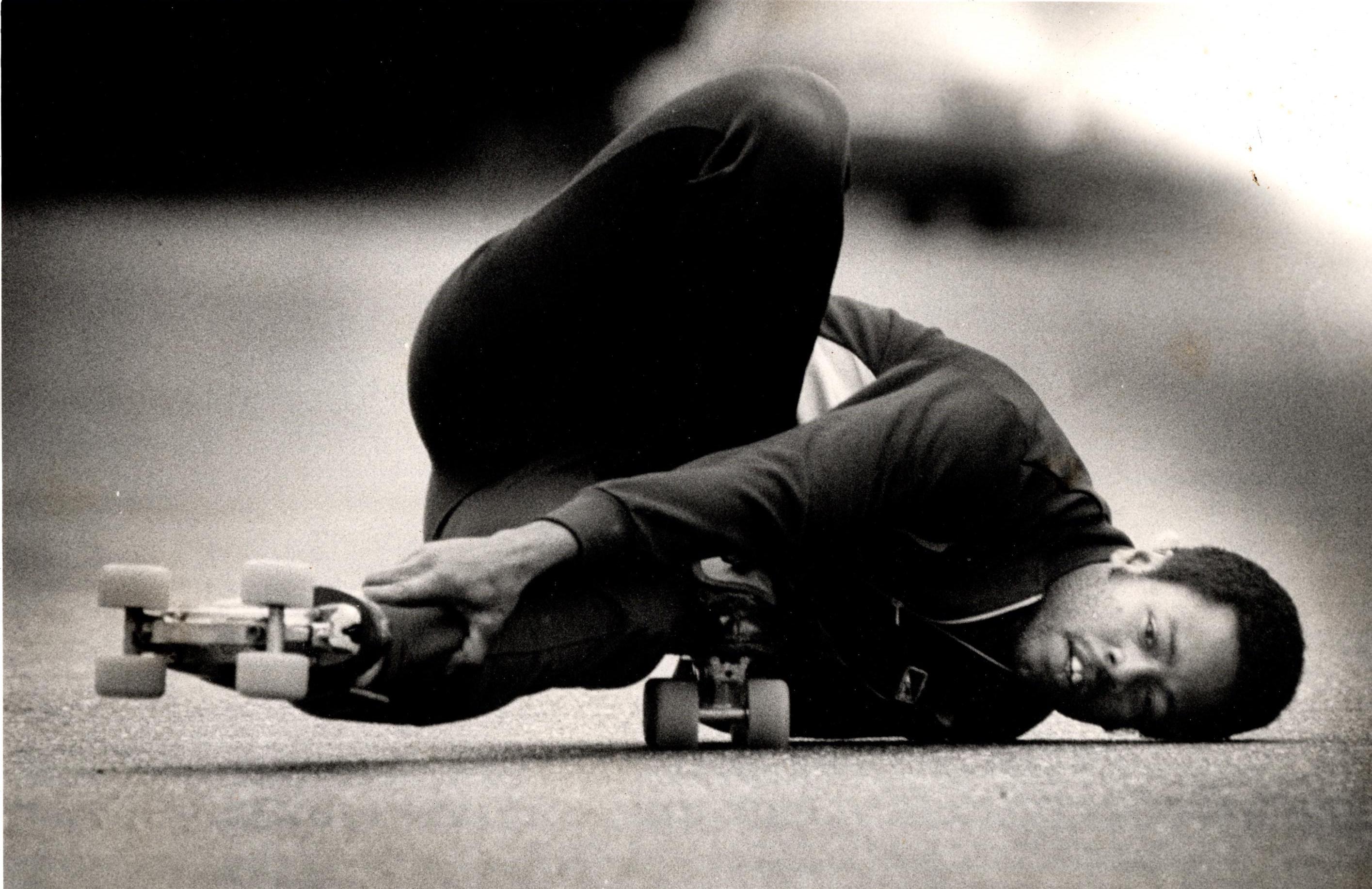
Photo Courtesy of David Miles Jr.
Anyone who has been to Golden Gate Park on a beautiful Sunday afternoon would recall hundreds of people biking, walking, running and roller skating along JFK Drive.
Back in 1969 and in the decade following, skating boomed in San Francisco. With the invention of the polyurethane wheel, the boombox, disco music and movies like Roller Boogie and Xanadu emphasizing the freedom one can get from skating outdoors, tens of thousands of eager people laced up their skates and took to the streets of San Francisco and Golden Gate Park. The vibe was funky, accepting and electrifying.
“I didn’t really consider myself a real roller skater until I came to Golden Gate Park in 1979,” Miles said. “It was a life-changing experience.” After discovering the weekly Sunday closure of JFK Drive from a handful of passing skaters, he returned to the park three days later. “And when I went out there, it was fantastic. It was just the greatest scene you can imagine. All these people, roller skating. Thousands of people. This amazing sight. And I’ve been hooked ever since that very day.
Skate Patrol and the Midnight Rollers (Friday Night Skate)
After 10 years of skating throughout the city, Miles became the head of the Skate Patrol, a group that worked tirelessly in San Francisco to keep skating from being banned. With neighbors complaining about safety, “back then the city did not know how to respond to the thousands of people coming out. The Skate Patrol was a group of volunteer skaters trained in first aid and CPR to help people,” Miles said. The Skate Patrol succeeded in stopping roller skating from being banned and continued to meet every Thursday night to tackle other San Francisco skating issues.

Photo Courtesy of David Miles Jr.
Midnight Rollers started shaking up the nighttime skating scene in San Francisco when the earth was shaking up the streets as well. In 1989, the Loma Prieta earthquake damaged the Embarcadero Freeway. After Skate Patrol meetings, the skaters would take to the shuttered road. “We were only twelve or fifteen of us at that time,” said Miles. “We saw a sign saying, ‘Do not enter,’ and of course, we entered, and skated on top of the Embarcadero Freeway, and it was magic, your own personal roadway around Disneyland. That started the Friday Night Skate.”
The skaters established an extensive route throughout the city and took their party on the road. Once the Embarcadero Freeway was demolished, the skaters just kept going and growing until their Friday night outings drew nearly 800 skaters.
“A group of people from Paris came, and they were totally fascinated with it. They went back to Paris and they started doing the Friday Night Skate,” Miles said. “They had up to 35,000 people on their Friday night skate. They call it Friday Night Fever.” The Discovery Channel flew Miles and his family out to participate. “We skated with 13,000 people down the Champs Élyseés. It was magic. The skate night grew to other cities, Amsterdam, England, South Africa, everywhere. To this day, it still goes on all around the world. And it all started with that earthquake.”
There are countless heart-racing and fun traditions to encounter as the skaters weave through the low-lit streets of the city. Miles recounted some of his favorites, beginning with an intersection turn at a traffic light on Union Street. Someone will take a microphone and begin a countdown. “And then everybody joins in, including the neighbors from in their windows above that are dancing as we come by,” he said. “And once we go, we blaze down the streets like we are on a motorcycle and we’re heading for the Broadway Tunnel.” All the while, Danger Zone from Top Gunz is the soundtrack to an adrenaline-pumping moment that feels straight out of a thriller movie.
Traditions continue with a Cupid Shuffle at Union Square. All bystanders are invited to join this party on wheels. “It’s like, everything is nice and quiet, and all of a sudden, all the skaters arrive in this big party. And, you know 10 minutes later, they’re gone and it’s quiet again. You can’t be in one place for very long,” said Miles.
The skaters bring their energy to several nightclub stops along the route as well. “The nightclub Deviate allowed us, 400 skaters, to cut the line. And we take it over. Not for very long, because my whole thing is to keep going. But it’s that special, San Francisco energy — that’s on wheels rolling through the city. It is still always a funky good time.”
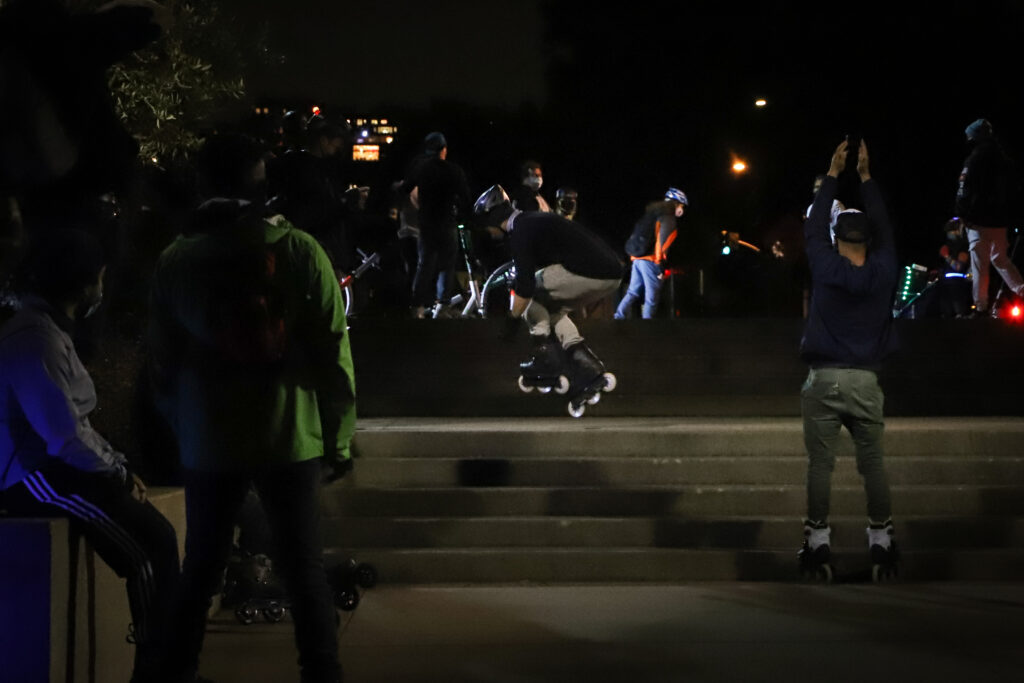
Photo by Gabe Castro-Root
Miles and the Skate Patrol had a system to reign in the chaos of so many skaters, managing intersections and keeping everyone safe. Onlookers typically are a bit shocked at first at the odd sight of hundreds of skaters rushing through the streets, he said, “But then they see us smiling and dancing and want to be a part of it.”
Much of what the skaters do is technically illegal — skating at night, in the streets. So in order to stay out of trouble, there is a list of rules for all the skaters to follow, as well as an emphasis on the importance of making strong relationships with the communities they skate through. “They are the ones to call the police on us,” Miles said.
But, he added, “San Francisco’s like this: If they like you, you are right. They’ll let you go. If they don’t like you, you can forget it. They’ll bring busloads of cops if you really have an attitude. So I never crossed those lines.”
So the skaters keep rolling every Friday night. “It’s always been an extension of the energy of San Francisco, it’s always done in good taste. We do all sorts of crazy things; we skate backwards down California street just for fun. I’ve skated from here to LA 15 times. We’re now at the point where we’re an example for every city. Every city should have what’s going on here in San Francisco.”
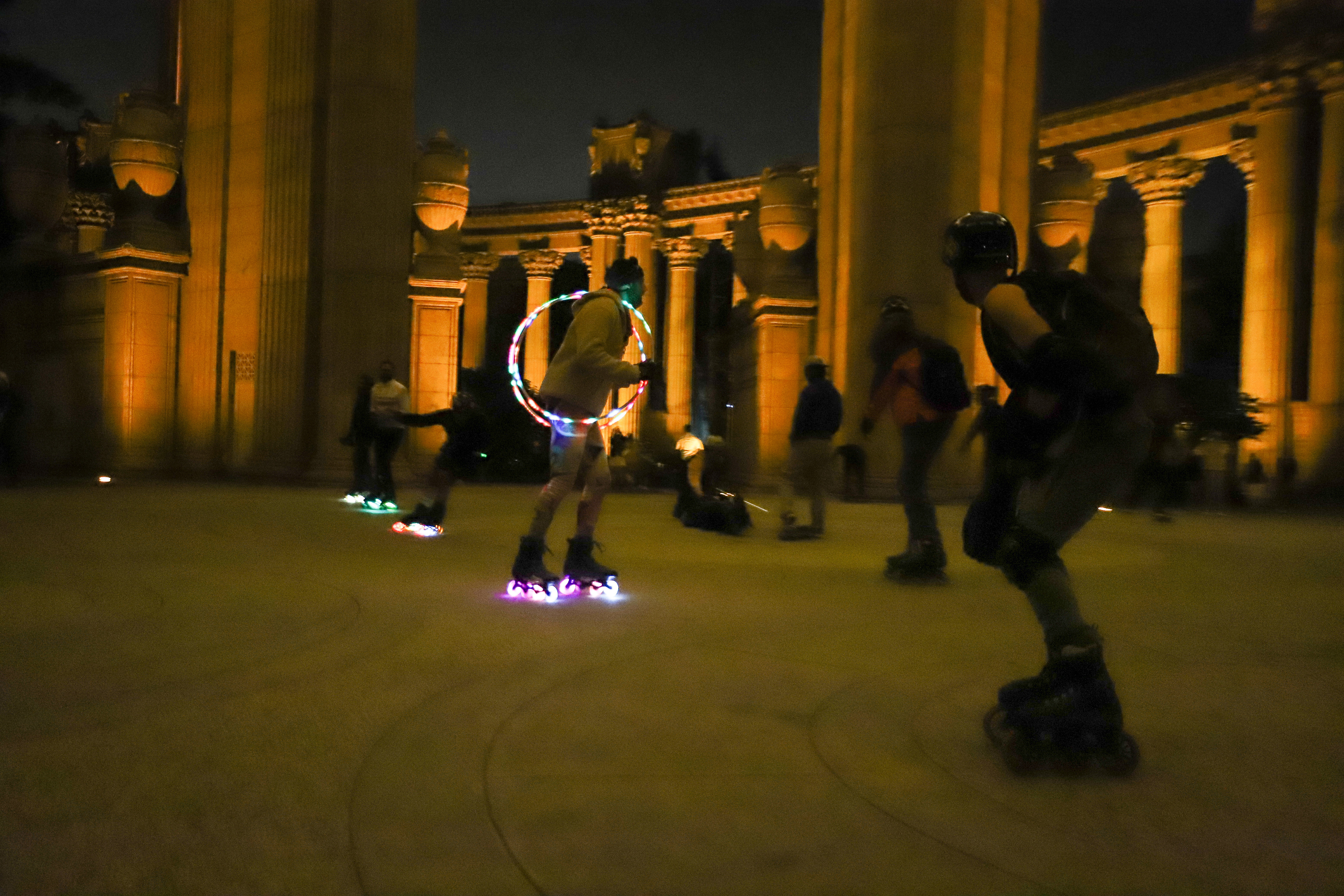
Photo by Gabe Castro-Root
Park Closure to Car Traffic
Miles has been involved in advocating for the closure of Golden Gate Park to car traffic for over 43 years. With everyone stuck at home during the pandemic, San Franciscans itching to go out took advantage of this green oasis; it made sense to shut down the car traffic so people could safely distance. “If COVID had not happened, we would not have had this experience, and would not have had as many people to understand how important it is to close the street to car traffic,” Miles said.
Miles and other advocates took this opportunity to push even harder in their fight to keep JFK Drive closed to cars permanently. His opponents include the park’s museums, which argue that traffic in the park brings them more business. So Miles took to the SF Examiner to make his case, writing a piece that explains in-depth the history of the conflict and what he believes will happen after the pandemic.
Church of 8 Wheels
For many years, Miles and other skaters had been searching for a place where skaters could skate indoors, but it takes a lot of money to run an entire roller rink in the city. Then, in November of 2013, he got word of a church that had been sitting empty for years. Miles then called up the property owner and asked if they could throw a party. He agreed, “and when he looked and he saw kids and families skating, music playing, lights, he thought it was a really cool thing.”
The property owner then agreed to let Miles continue to do the event each week, and the Church of 8 Wheels has been a skating refuge ever since. “If I had won the lottery, I would do something like turn a church into a roller rink. But I tell people I’m the luckiest person who has never won a lottery. Because look what I get to do! Who gets to do this?” Everyone in Miles’ family is involved, his wife at the doors, his kids renting out skates and playing the music.
Skating, Miles says, “is the love of my life, ‘cept for Rose, my wife. I met my wife skating in the park 42 years ago. We’re still rolling. She’s the glue that keeps my crazy world together.”
The ability to embrace the funky and unique and extraordinary is quintessentially the soul of San Francisco. “Most of the people here aren’t from here. Everybody comes to San Francisco from somewhere. The minds of the people are open to the point where you can introduce the unusual, what is different. Everybody around the country might not get into it, but in San Francisco, the weird and strange are normal, not in a bad way, but in a great way. You feel you can be exactly who you are.”
The closure of JFK drive on April 2, 1967, serves as a tether to the Summer of Love. While not in the hordes of thousands anymore, people with eight wheels strapped to their feet can be seen in the park without fail, having a groovy time. The skating soul of San Francisco isn’t dead. It’s alive and thriving.
“Everybody looking for that magic in San Francisco, come on out to the park,” Miles says. “The magic still exists.”
Videos of the Friday Night Skate + the Skatin’ Place



